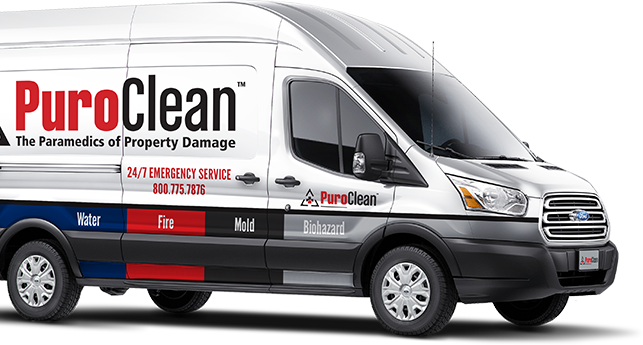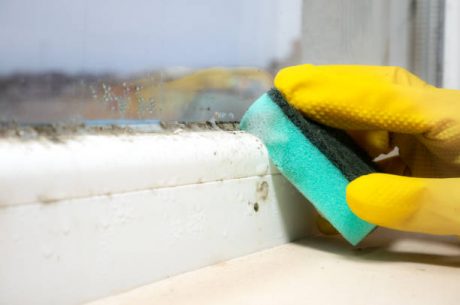The discovery of black mold in your home can be alarming. Your first concern is rightfully for your family’s health and the integrity of your property. Your second thought, however, is likely about the cost of remediation and whether your homeowners insurance will cover it.
Navigating the world of insurance claims, especially for something as complex as mold, can be a daunting process. At PuroClean of Victor Heights, we’ve helped countless homeowners through this experience. We not only remediate the mold but also provide the necessary documentation and expertise to help you navigate your insurance claim.

Here’s what you need to know about black mold insurance claims to be better prepared.
READ ALSO: Dirty Jobs: Top Disaster Restoration Franchise
The Critical Question: Is Mold Covered by Homeowners Insurance?
There is no simple “yes” or “no” answer to this question. Coverage for mold damage, including “black mold” (the common term for toxigenic molds like Stachybotrys chartarum), depends almost entirely on the source of the moisture that caused the mold to grow.
Homeowners insurance policies are designed to cover sudden and accidental damage. Mold that results from one of these “covered perils” is often covered, but only up to a certain limit.
Examples of a “Covered Peril” Leading to Mold Growth:
- A Burst Pipe: A pipe suddenly freezes and bursts, flooding your basement. The water damage is cleaned up, but mold grows in the damp drywall. The mold remediation would likely be covered as a direct result of the covered water damage event.
- An Appliance Malfunction: Your washing machine hose unexpectedly breaks, spraying water all over the laundry room. The resulting mold growth would typically be covered.
- Storm Damage: A severe storm tears shingles from your roof, allowing rainwater to enter your attic and causing mold. This is generally covered.
- Fire Extinguishing: Firefighters use water to put out a small kitchen fire. If mold grows as a result of the water used, it’s typically covered.
When is Mold Typically Not Covered?
Insurance companies expect homeowners to perform regular maintenance. Mold resulting from neglect, deferred maintenance, or long-term problems is almost always excluded from standard policies.
Examples of Excluded Mold Damage:
- A Slow, Long-Term Leak: A small, dripping pipe under your sink that you were aware of but didn’t fix eventually causes significant mold. This will likely be denied due to negligence.
- High Humidity: Mold that grows in a poorly ventilated bathroom due to steam from showers is considered a maintenance issue.
- Foundation Seepage: Ground water that slowly seeps into your basement over time, creating a damp environment perfect for mold, is typically not covered.
- Flood Damage: Mold resulting from a natural flood (e.g., a river overflowing) is excluded from homeowners insurance. Flood damage is only covered by a separate flood insurance policy.
Understanding Mold Coverage Limits and Endorsements
Even when mold is covered under a covered peril, the coverage is usually capped. Most standard homeowners policies have a specific limit for mold remediation, which can range from $1,000 to $10,000. This limit is often insufficient for a significant mold problem, which can easily exceed $10,000 if extensive demolition and reconstruction are required.
Some insurance companies offer a mold endorsement or rider, which is an optional add-on to your policy that provides higher coverage limits for mold. It’s crucial to review your policy documents or speak with your insurance agent to understand your specific limits and see if purchasing a mold rider makes sense for you.

Steps to Take When Filing a Black Mold Insurance Claim
If you discover mold and believe it was caused by a covered peril, acting quickly and methodically is key.
- Prevent Further Damage: Your first responsibility is to stop the source of the moisture. If it’s a leak, turn off the water. If it’s from a storm, place a tarp over the damaged roof. Document every step you take.
- Contact Your Insurance Company Immediately: Report the initial water damage event as soon as possible. Delaying can sometimes lead an insurer to argue that the damage worsened due to your inaction.
- Document Everything: This is the most critical step. Take clear photos and videos of the mold and the source of the water damage before any cleanup begins. Keep a detailed log of everyone you speak with at your insurance company, including dates, times, and what was discussed.
- Call a Professional Remediation Company: This is where PuroClean of Victor Heights comes in. Do not attempt to remove the mold yourself. A professional remediation company will:
- Properly assess the extent of the damage using specialized equipment.
- Establish containment to prevent the spores from spreading to other areas of your home.
- Provide detailed, professional documentation, including moisture readings, photos, and a clear scope of work, which is exactly what your insurance adjuster needs to see.
- Review Your Policy: Get a copy of your full homeowners insurance policy and read the sections on water damage and mold. Understand your coverage limits and your deductible.
How PuroClean of Victor Heights Can Help
Working with a professional, IICRC-certified company like PuroClean of Victor Heights is invaluable during an insurance claim. We are accustomed to the documentation and processes that insurance companies require.
- We speak the language of insurance: We provide detailed reports and standardized estimates that adjusters understand, which can help streamline your claim.
- We provide proof: Our use of moisture meters and thermal imaging cameras provides scientific evidence linking the mold growth to the water intrusion event.
- We work for you, not the insurance company: Our priority is to ensure your home is safely and completely remediated according to industry standards. We document everything to justify the necessary work.

Facing a mold problem can be stressful, but you don’t have to go through it alone. Understanding the basics of your insurance policy and partnering with a trusted professional can make all the difference. If you’ve discovered mold in your home, call PuroClean of Victor Heights. We are here to help restore your property and your peace of mind.
PuroClean of Victor Heights
📌 Fire damage restoration service in Los Angeles, California
📍 1301 W 2nd St, Los Angeles, CA 90026, United States
🕓 Open 24 hours
📞 (213) 328-3550
🌐 https://www.puroclean.com/los-angeles-ca-puroclean-victor-heights/
📩 [email protected]




 PuroClean of Victor Heights
PuroClean of Victor Heights